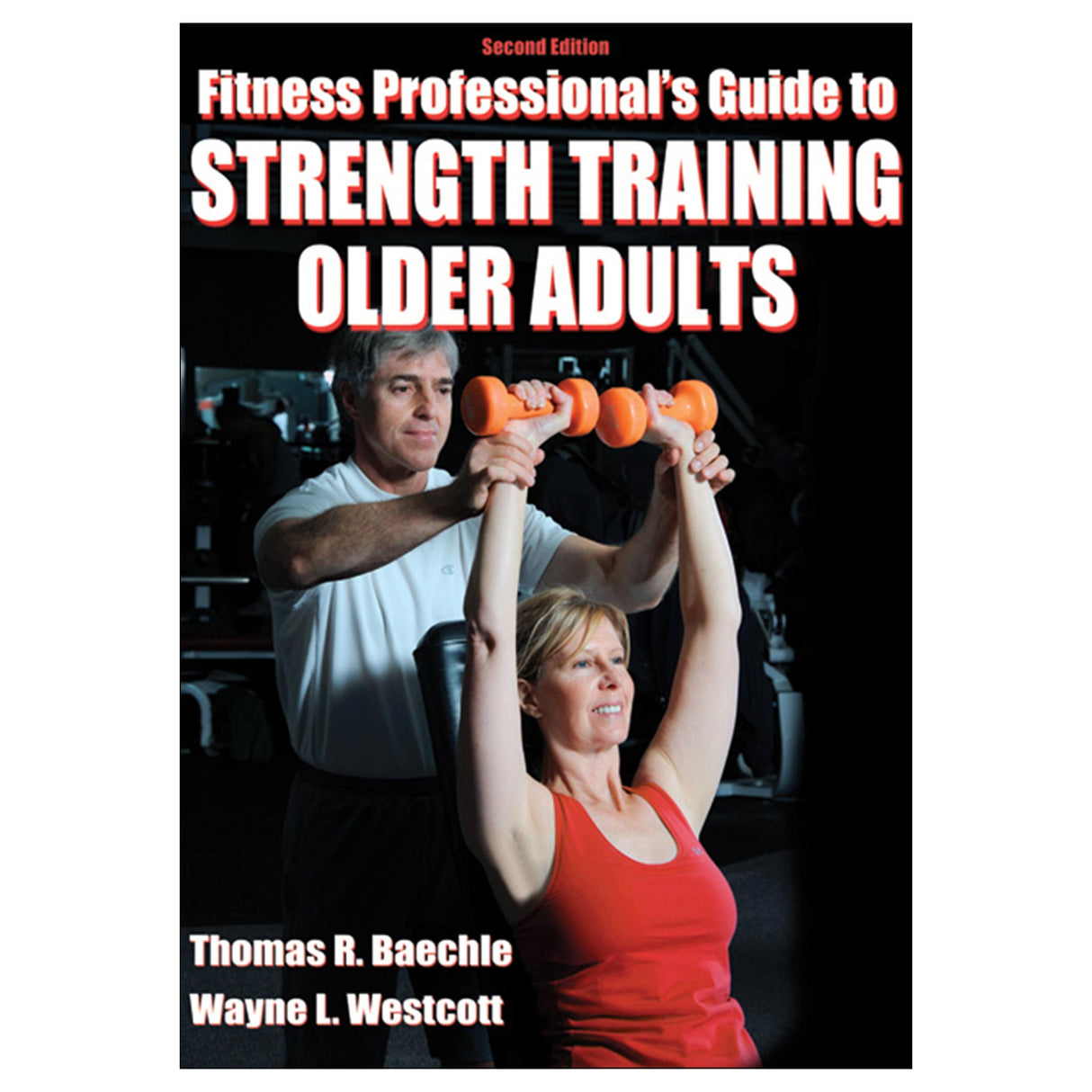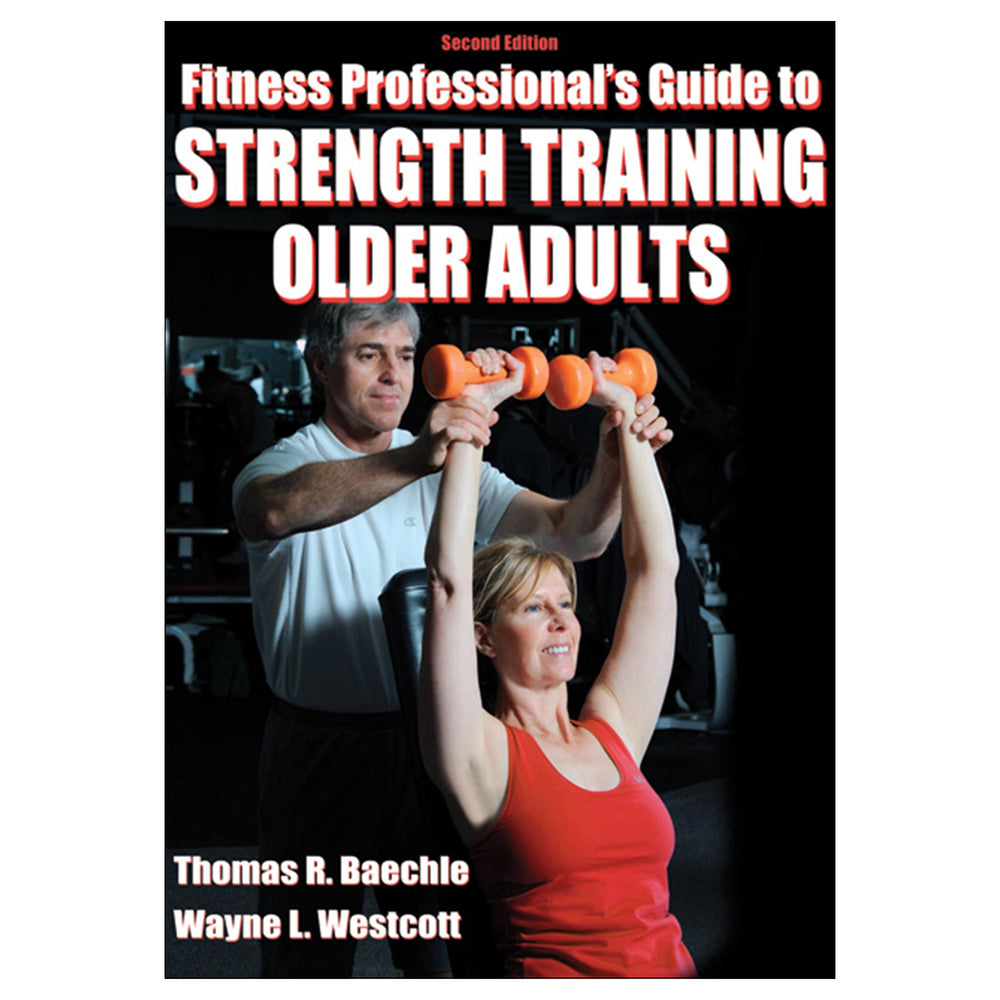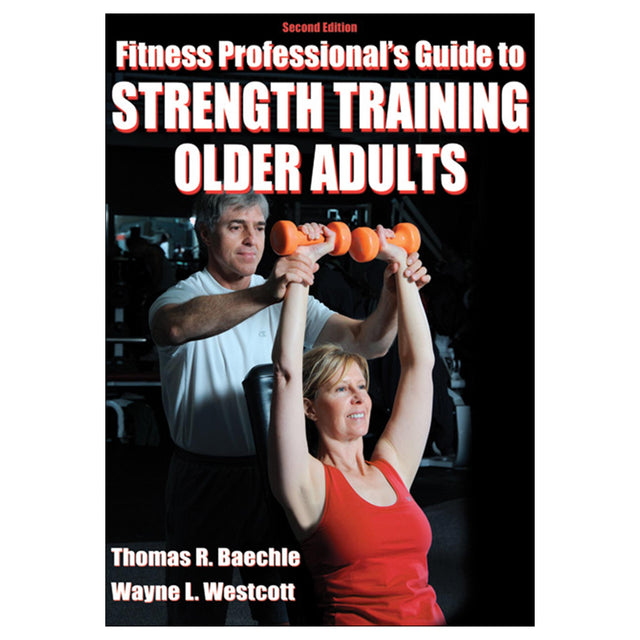Fitness Professional's Guide to Strength Training Older Adults 2nd Edition PDF
Author: Thomas R. Baechle, Wayne Westcott
$48.95 CAD
Access Duration: 10 Years
Bring the benefits of strength training to seniors—regardless of their fitness levels—with Fitness Professional's Guide toStrength Training Older Adults, Second Edition. This resource contains the information and tools you need to educate, motivate, and assist older adults in committing to and benefiting from individualized strength training programs.
Baechle and Westcott, leading authorities in fitness and strength training, offer information and guidance based on their combined 50-plus years of experience as strength training athletes, coaches, instructors, and researchers. The authors’ summaries of current research will update your knowledge of the specific health benefits of strength training for senior populations, including those with chronic conditions. Guidelines for senior strength training provide a basis for your program design, and recommendations for program modifications will assist you in constructing strength training programs that meet each client’s needs, abilities, and limitations.
Previously published as Strength Training for Seniors, this new edition has been retooled to assist health and fitness instructors at health clubs, YMCAs, community centers, nursing homes, retirement communities, and other organizations in helping older adults obtain the far-reaching benefits of strength training. Fitness Professional's Guide to StrengthTraining Older Adults includes these updates:
• A new chapter on sport conditioning programs, which provides specific strength training exercises to boost performance and reduce risk of injury for older runners, cyclists, swimmers, skiers, golfers, tennis players, rowers, rock climbers, hikers, softball players, and triathletes
• Updated research regarding program design and performance for special populations, including seniors with diabetes, cardiovascular disease, low-back pain, balance issues, arthritis, osteoporosis, fibromyalgia, frailty, and poststroke impairments
• Updated nutrition information and specific nutrition guidelines to help seniors properly fuel their bodies for aerobic exercise, muscle building, and daily living
Precise illustrations and biomechanically sound instructions for exercises that use resistance machines, free weights, body weight, elastic bands, and balls help you review proper techniques and provide your clients with clear explanations. Unique teaching scripts offer strategies for communicating information that will help your clients avoid errors that cause injury or reduce the effectiveness of the exercise.
Use the sample 10-week workout to help your beginning clients establish a foundation of muscle strength to improve everyday tasks and increase cardiovascular capability. You’ll also find intermediate and advanced workout programs focused on increasing muscle size, strength, and endurance along with specific considerations for older adults at each fitness level. In addition, practical methods for client assessment assist you in measuring muscle strength, hip and trunk flexibility, and body composition; guidelines also help your clients assess their own progress.
Featuring principles, protocols, and adaptations, Fitness Professional's Guide to Strength Training Older Adults has everything you need for designing and directing sensible strength training programs for seniors. Information is presented progressively, making it easy to apply for fitness and health care professionals with varied backgrounds and experiences. In addition, numerous references for each topic offer starting points for further study, and tables, figures, and logs provide guidance in exercise program design and education for your clients.
Substantial research has shown that strength training can reverse many of the degenerative processes associated with aging and reduce the risk and severity of several health problems common among older adults. Use the information and tools in Fitness Professional's Guide to Strength Training Older Adults to help your senior clients understand the benefits of strength training, overcome their intimidation, and commit to a training program that will enable them to enjoy a more vibrant and active lifestyle.
Chapter 1: Why Seniors Should Strength Train
Body Composition
Metabolic Rate
Diabetes
Gastrointestinal Transit
Cardiovascular Disease
Osteoporosis
Low-Back Pain
Arthritis
Fibromyalgia
Depression and Self-Confidence
Visual and Auditory Impairments
Strokes
General Fraility
Chapter 2: Training Principles and Teaching Strategies
Principle 1: Training Frequency
Principle 2: Number of Sets
Principle 3: Training Resistance or Loads
Principle 4: Number of Repetitions
Principle 5: Exercise Selection
Principle 6: Training Progression
Teaching Strategies
Chapter 3: Exercise Execution Procedures and Instruction
Full Range of Movement
Controlled Movement Speed
Breathing
Warm-Up and Cool-Down
Machine and Free Weight Exercise Instruction
Chapter 4: Basic Workout Programs
Recommended Load Assignments for Exercises
Weeks 1 and 2
Weeks 3 and 4
Weeks 5 and 6
Weeks 7 and 8
Weeks 9 and 10
Chapter 5: Intermediate and Advanced Workout Programs
Intermediate Training Considerations
Muscle Size
Muscle Strength
Muscle Endurance
Advanced Training Considerations
Chapter 6: Alternative Exercises and Programs
Planning Your Program
Guidelines for Reps, Sets, and Rest Periods
Bodyweight Exercises
Elastic Resistance Exercises
Chapter 7: Progress Assessment
Muscle Strength
Assessing Hip and Trunk Flexibility
Body Composition
Personal Perceptions
Chapter 8: Working With Special Populations
Obesity
Diabetes
Cardiovascular Disease
Osteoporosis
Low-Back Pain
Arthritis
Fibromyalgia
Depression and Self-Confidence
Visual and Auditory Impairments
Strokes
General Frailty
Chapter 9: Sport-Specific Strength Training
Runners
Cyclists
Swimmers
Skiers
Tennis Players
Golfers
Rock Climbers and Hikers
Triathletes
Rowers
Softball Players
Chapter 10: Nutrition for Senior Clients
The Basic Nutrients
Three Steps to Better Nutrition
Energy for Exercise and Protein for Muscle Building
Eating, Exercise, and Encouragement





